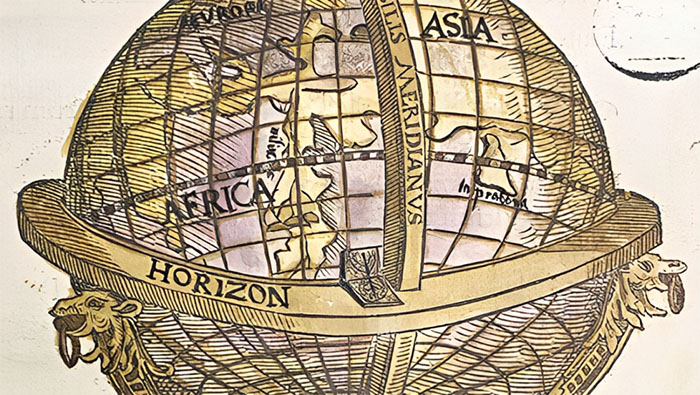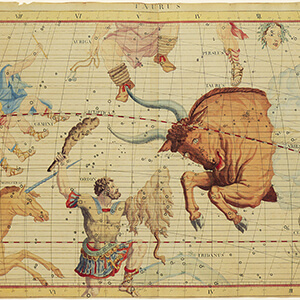Collection Spotlight: Historic Astronomy

Special Collections is home to the Ernst Zinner Historic Astronomy Collection. This world-class collection contains some of the oldest and rarest titles in the library, including thirteen incunabula (books printed before 1501), the first edition of Nicolaus Copernicus’ seminal text, De Revolutionibus Orbium Coelestium (1543), and Tycho Brahe’s Astronomiae Instauratae Mechanica (1602). Users can explore the shift from Ptolemy’s geocentric (earth-centered) theory to Copernicus’ confirmed heliocentric (sun-centered) theory of our planetary system through the works of both astronomers, as well as those of Brahe, Sacro Bosco, Johannes Kepler, Galileo Galilei, Isaac Newton, and many others. Some highlights include Kepler’s revelations about the elliptical orbit of the planets, Galileo’s support for heliocentrism via telescopic observations, Newton on gravity, Pierre Gassendi’s confirmation of Kepler’s planetary motion laws, texts describing optical, mathematical and charting tools and instruments, and observations on comets.
The Historic Astronomy Collection supports not only research and creative activities in the history of science, but other humanities topics as well, including the history of the book and of printing, printmaking and illustration, and the evolution of occult practices such as astrology and alchemy. The earlier books in the collection, printed on a hand press with hand-set movable type, demonstrate the perfection of a technology that would endure for nearly 500 years before being phased out by machine production. We’d be hard pressed to name another single technology that has remained in use for as long!
We’re proud to preserve and provide access to this collection and partner with faculty to promote its importance and use. In recent years, we’ve had the pleasure of working with astronomy professors William Welsh and Jerome Orosz, and professors emeritus Fred Talbert and John Hood, all of whom share the view that the historical context and significance of these works cannot be overstated. Special Collections looks forward to welcoming users to view these spectacular pieces of history in person when it’s safe. In the meantime, enjoy some images from the collection!

